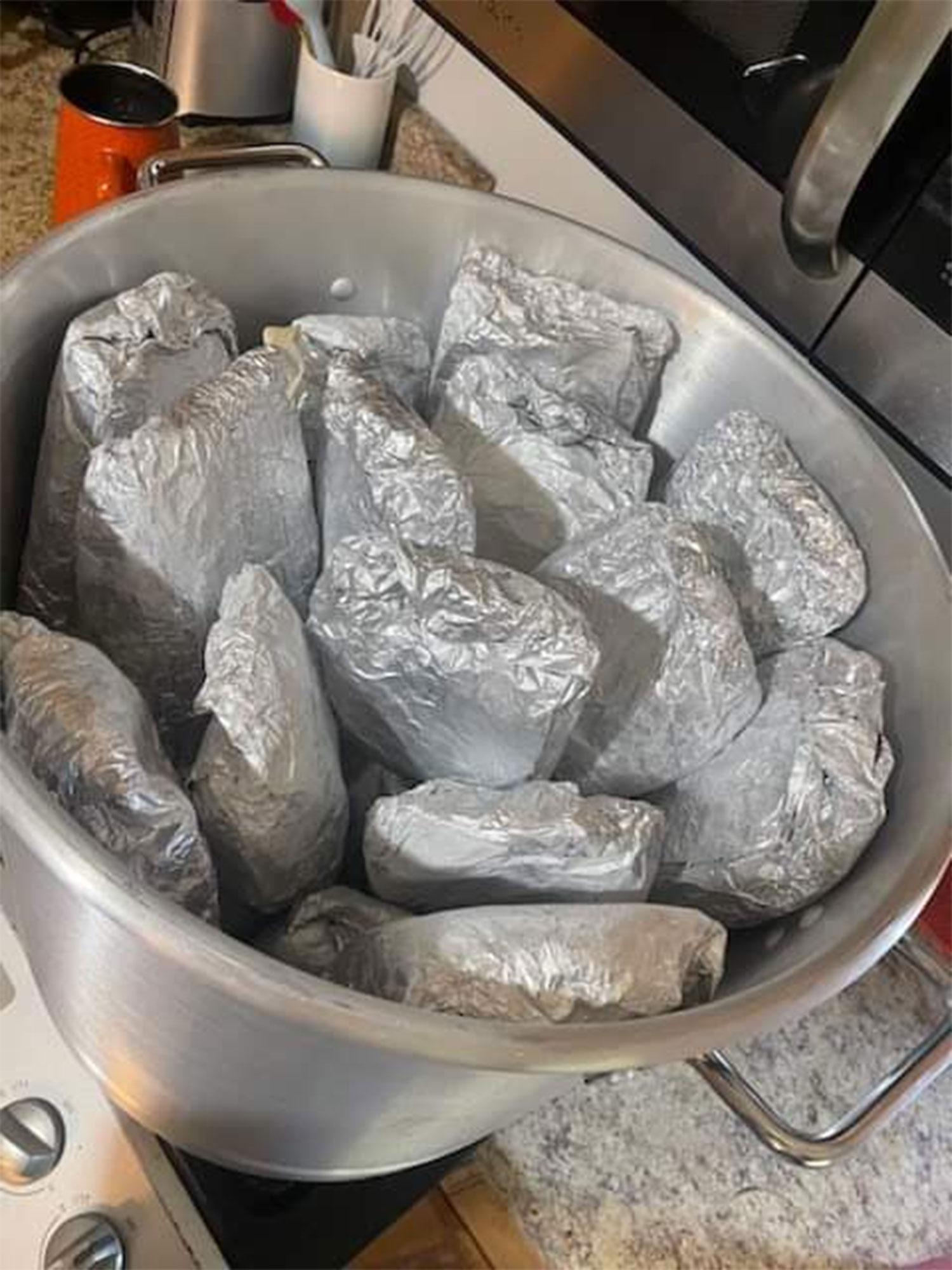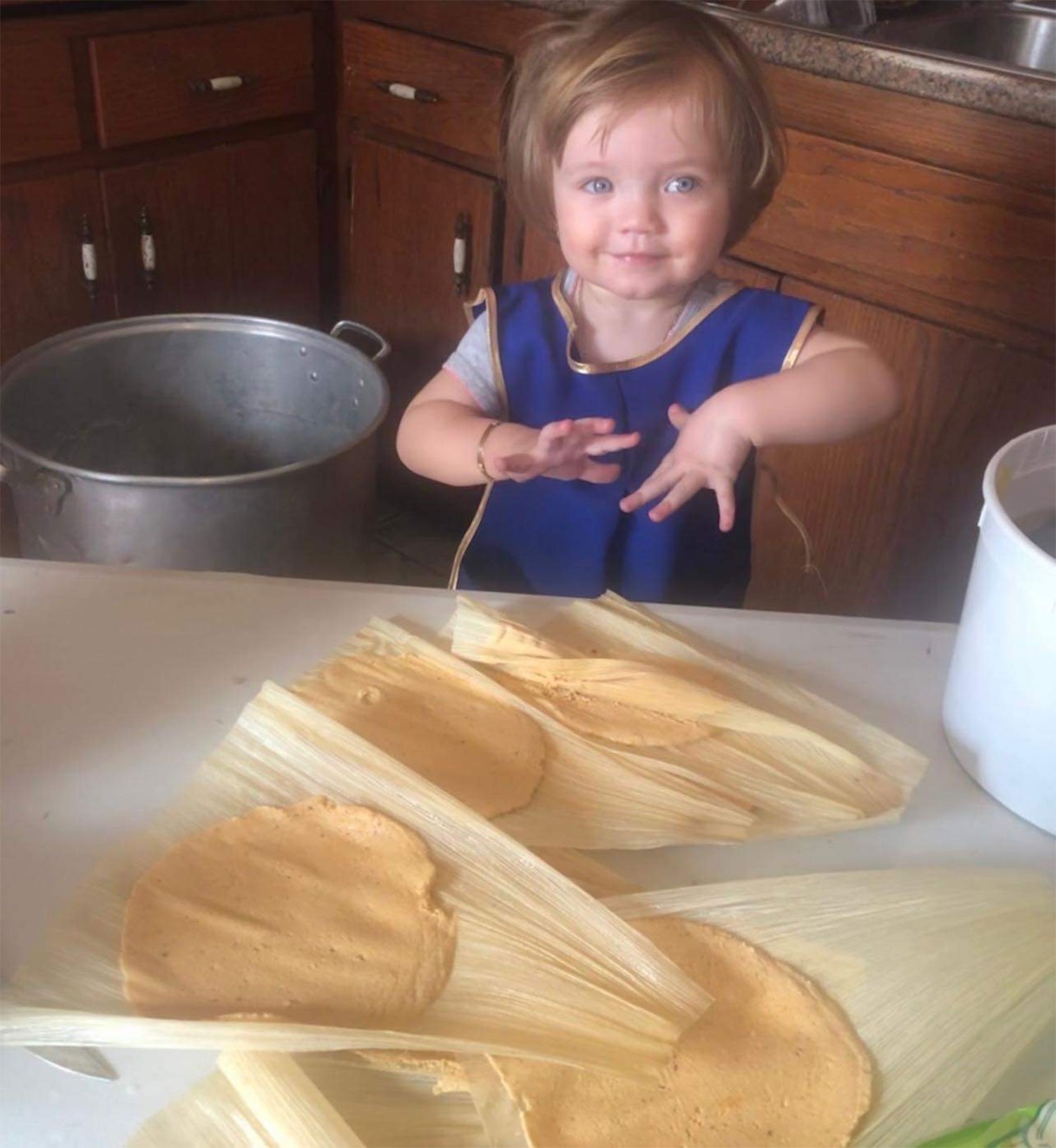The aluminum pack is scalding hot, held by brown hands that are somehow impervious to the heat. The pack is then handed to novice hands that bounce it back and forth between palms. Finally, it’s dropped into a plastic bag. The pack is filled with a dozen tamales.
Milwaukee, as well as other cities with brutal winters, has a small army of tamaleras, older Mexican women who live off the grid, selling tamales to their public by a strict word-of-mouth campaign. The women materialize on the south side during the cold months. Tamales are sold year-round, but they are made more available between October and March, as the ladies come out of their kitchens and sell them outside churches, laundromats, and other public spaces.
“Usually around this time we get bulk orders and I just can’t keep up,” says Cirila, who takes orders by phone. “My phone is constantly ringing and my kids are running around everywhere doing drop-offs.”
There are some simple rules to finding tamales in Milwaukee; unfortunately, store-bought tamales are just not the way to go. There is something lost in translation, and preservatives are sometimes added in order to make sure they last longer.
The rules are:
• Never buy tamales from a store.
• Support your local tamalera.
• If the tamales are being sold out of a cooler, they are fresh.
• If you are given a phone number to call with no name attached to it, make sure you call.
• Get your orders in before December 1.
“Tamales have to be eaten within 12 hours of being made,” says Dona Esther, who sells her tamales out of a cooler at the Blue Kangaroo on 29th and Greenfield. “There is a reason they are made for parties and special events and in such large batches. They have to be soft and still have ballast, and the meat has to be especially lean to be able to compliment the masa that has been steamed.”

In the spirit of Mexican food vendors, tamaleras will set up shop outside churches when Mass lets out, or in other busy areas like laundromats. The women usually have their grandkids in tow, as well as a cooler filled with packs of steaming hot tamales. You will hear the unmistakable cry of deliciousness: “Tamales! Champurrado!” (Champurrado is a hot drink made with cinnamon, Mexican chocolate, water, and corn masa. It is made to compliment the tamales during cold weather, and the two are almost always sold together.)
Inflation has driven up the cost of everything, and tamales are unfortunately no exception. After speaking with six different tamaleras on the phone and on the street, the tamales are currently running for $20 a dozen. Some ladies will not make a dozen, and will ask you to order at least two dozen to make it worth the effort. Sometimes you will luck out and they will already have a large order and add your measly dozen to their workload.
December 1 through January 5 is a time when Mexicans eat pozole and tamales, reheated throughout the month. While some may get sick of these two dishes during this time, we remember them fondly in the summer months. The more you weigh, the harder you are to kidnap. Stay safe, eat tamales.

Want more Milwaukee Record? Subscribe to our free weekly newsletter and/or support us on Patreon.

